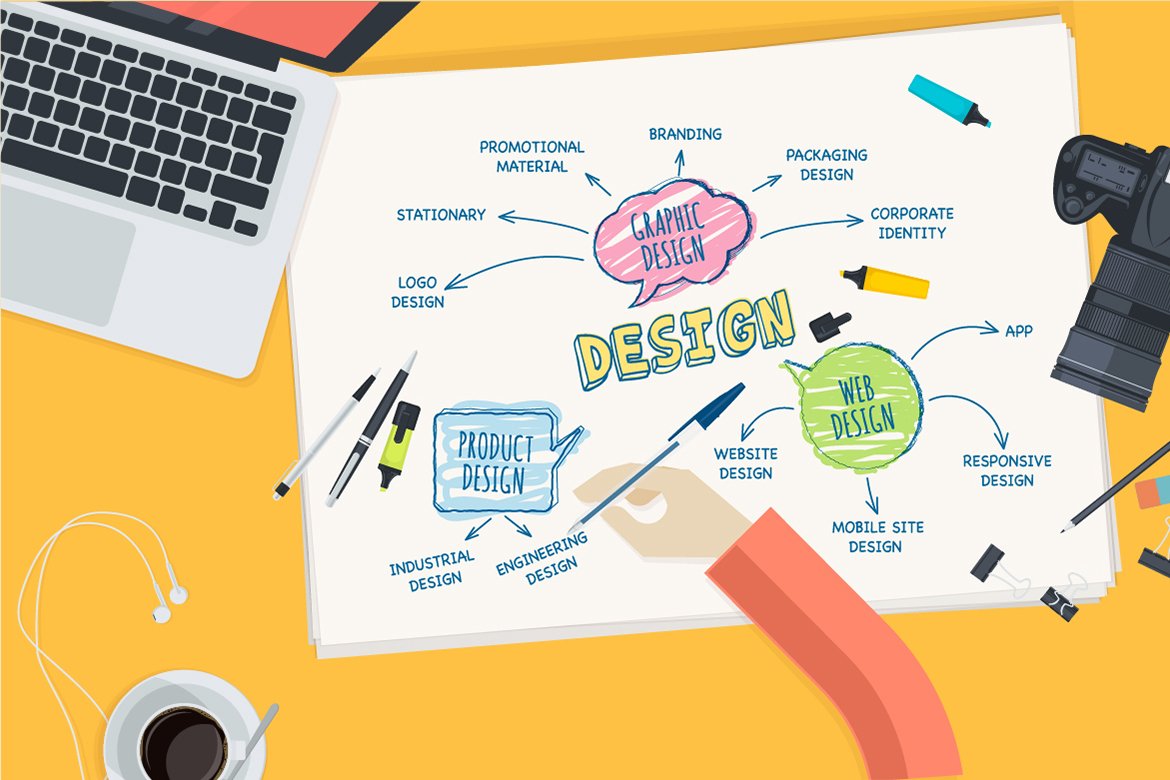09 December
Evolution of Graphic Designing from past to present
published
August 23topics
#Design
The Birth of Graphic Design: From Cave Paintings to Typography
The evolution of graphic design traces a remarkable journey from the primal cave paintings of ancient times to the intricate typographical compositions of the modern world. Beginning with early cave paintings, which conveyed stories through imagery, humanity's desire to communicate visually emerged. Pictographs and petroglyphs followed, offering simple symbols to convey ideas, eventually evolving into typography. Johannes Gutenberg's invention of the moveable type printing press in the 15th century ignited a revolution. This technological marvel democratized knowledge, enabling the mass production of printed materials and establishing typography as a central design element. Typography's aesthetic importance grew in the 19th century, with designers like William Morris embracing the fusion of art and typography, shaping the modern design landscape. The journey from cave walls to intricate typography highlights the power of design to transcend time, culture, and technological advancements. It's a testament to human creativity and the unending quest to visually communicate stories, ideas, and emotions. Each phase of this evolution, from primal artistry to refined typography, contributes to the captivating narrative of graphic design's birth and its enduring impact on human expression.
The Early Days of Graphic Designing
The Industrial Revolution and Beyond
The Digital Age
Modern Graphic Designing
Trends in Modern Graphic Designing
Minimalism
Flat Design
Responsive Design
The Future of Graphic Designing
Augmented Reality (AR)
Artificial Intelligence (AI)
There are many famous graphic designers who have made significant contributions to the field. Here are some of them:
David Carson: Appropriately dubbed ‘the Godfather of Grunge’, David Carson revolutionized the use of typography in graphic design.
Saul Bass: A household name in the world of design, Saul Bass is a legend whose work you’ve probably seen without even realizing it. He’s responsible for some of the most iconic logos and movie posters in history.
Stefan Sagmeister: Stefan Sagmeister is an Austrian graphic designer and typographer who has worked with some of the biggest names in the music industry.
Paula Scher: Paula Scher is an American graphic designer and artist who has worked with clients such as Microsoft, Coca-Cola, and The New York Times.
Michael Bierut: Michael Bierut is an American graphic designer who has worked with clients such as The New York Times, Saks Fifth Avenue, and Verizon.
Massimo Vignelli: Massimo Vignelli was an Italian designer who worked in a variety of fields including graphic design, interior design, and product design.
Milton Glaser: Milton Glaser was an American graphic designer who is best known for creating the iconic “I ❤ NY” logo.
Paul Rand: Paul Rand was an American art director and graphic designer who is best known for his corporate logo designs.
Herb Lubalin: Herb Lubalin was an American graphic designer who is best known for his work on Avant Garde magazine and his typography designs.
Neville Brody: Neville Brody is an English graphic designer, typographer, and art director who is best known for his work on The Face magazine.
Most Iconic Logos in History There are many iconic logos in history. Here are some of them:
Apple: The Apple logo is one of the most recognizable logos in the world. It was designed by Rob Janoff in 1977.
Nike: The Nike swoosh is one of the most iconic logos in the world. It was designed by Carolyn Davidson in 1971.
Coca-Cola: The Coca-Cola logo is one of the most famous logos in the world. It was created by Frank Mason Robinson in 1887.
McDonald’s: The McDonald’s logo is one of the most recognizable logos in the world. It was designed by Jim Schindler in 1962.
Mercedes-Benz: The Mercedes-Benz logo is one of the most iconic logos in the world. It was designed by Gottlieb Daimler and Karl Benz in 1909.
Adidas: The Adidas logo is one of the most recognizable logos in the world. It was designed by Adi Dassler in 1949. Pepsi: The Pepsi logo is one of the most famous logos in the world. It was created by Caleb Bradham in 1898.
IBM: The IBM logo is one of the most iconic logos in the world. It was designed by Paul Rand in 1972.
Volkswagen: The Volkswagen logo is one of the most recognizable logos in the world. It was designed by Franz Reimspiess in 1938.
FedEx: The FedEx logo is one of the most famous logos in the world. It was designed by Lindon Leader in 1994.
Conclusion
FAQ's
Q. How has technology impacted graphic design's evolution?
A. Technology has significantly shaped graphic design, from the advent of printing presses in the 15th century to the digital revolution of the late 20th century. Computers, software, and the internet have revolutionized design creation, distribution, and accessibility.
Q. What are some key design movements in graphic design history?
A. Graphic design history is marked by various movements, including Art Nouveau, Bauhaus, Swiss Style, Pop Art, and Postmodernism. Each movement brought distinct visual approaches and philosophies to the field.
Q. How has cultural change influenced graphic design?
A. Cultural shifts, such as social movements and political changes, have heavily impacted graphic design. Designs often reflect the values, aesthetics, and trends of the times they were created.
Q. What role does typography play in graphic design's evolution?
A. Typography has always been a crucial element in graphic design. Over time, typefaces have evolved from handcrafted lettering to digital fonts, offering designers a wide range of expressive options.
Q. How did graphic design adapt to digital media?
A. The rise of digital media led to the integration of design with technology. Graphic designers transitioned from traditional methods to software tools, creating designs for websites, social media, apps, and more.
Q. What is the significance of user experience (UX) in modern graphic design?
A. In modern design, user experience (UX) has become paramount. Designers focus on creating visually appealing and user-friendly experiences across various platforms to engage audiences effectively.
Q. How does the evolution of graphic design impact branding and advertising?
A. Graphic design plays a pivotal role in branding and advertising. Design trends and consumer preferences have led to innovative approaches to creating memorable logos, impactful visuals, and engaging campaigns.
Q. What's the future of graphic design?
A. The future of graphic design will likely involve continued integration of technology, such as AI-generated graphics and augmented reality. Designers will need to adapt to new tools and trends while staying true to core design principles.Become Our Next Obsession With Your Project.
Let’s talk
We're excited to discuss your ideas, goals, needs, and dreams. Let's schedule a call.
Start a projectSome topics to look into
discover our blog22 November
02 November






